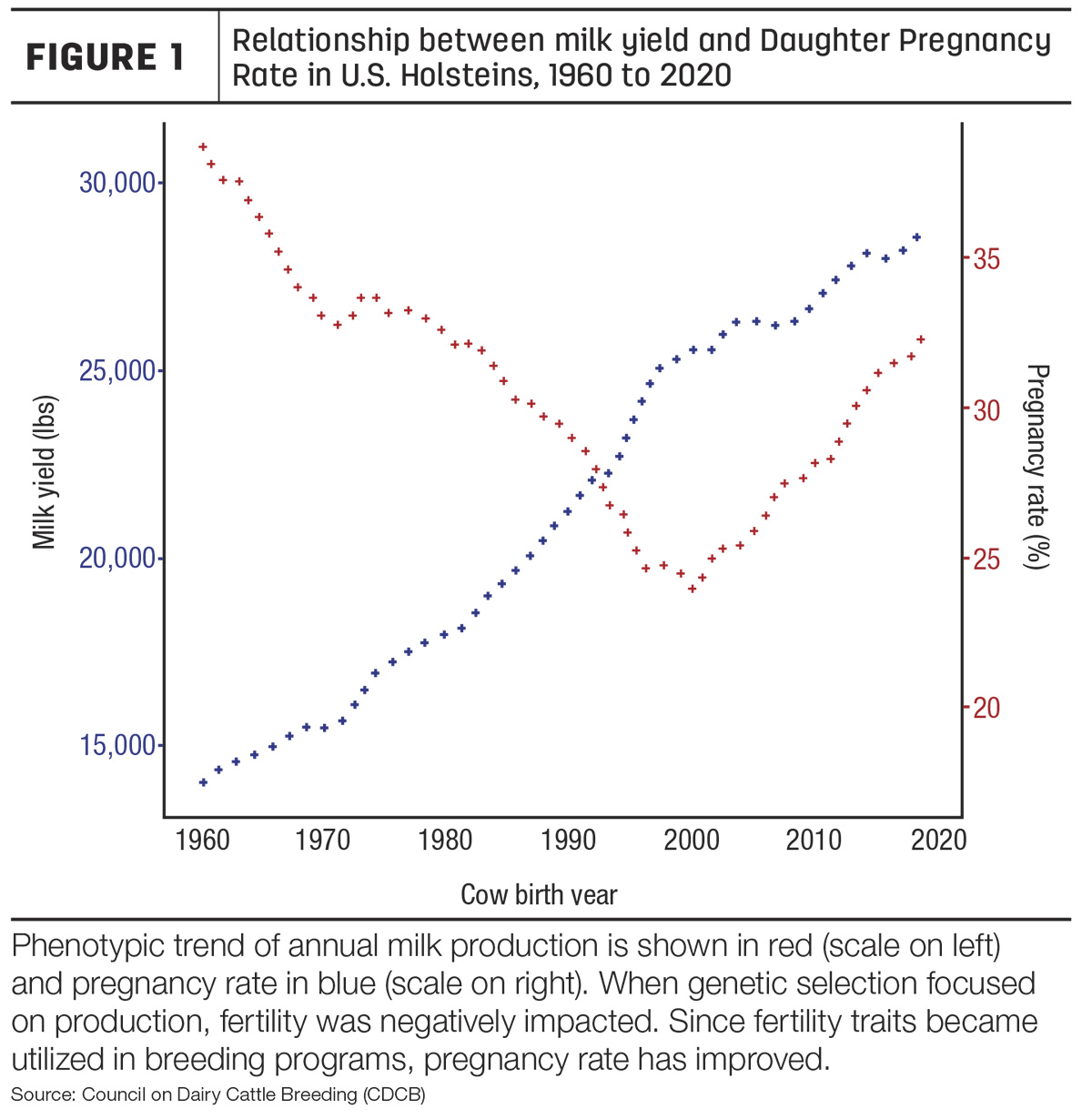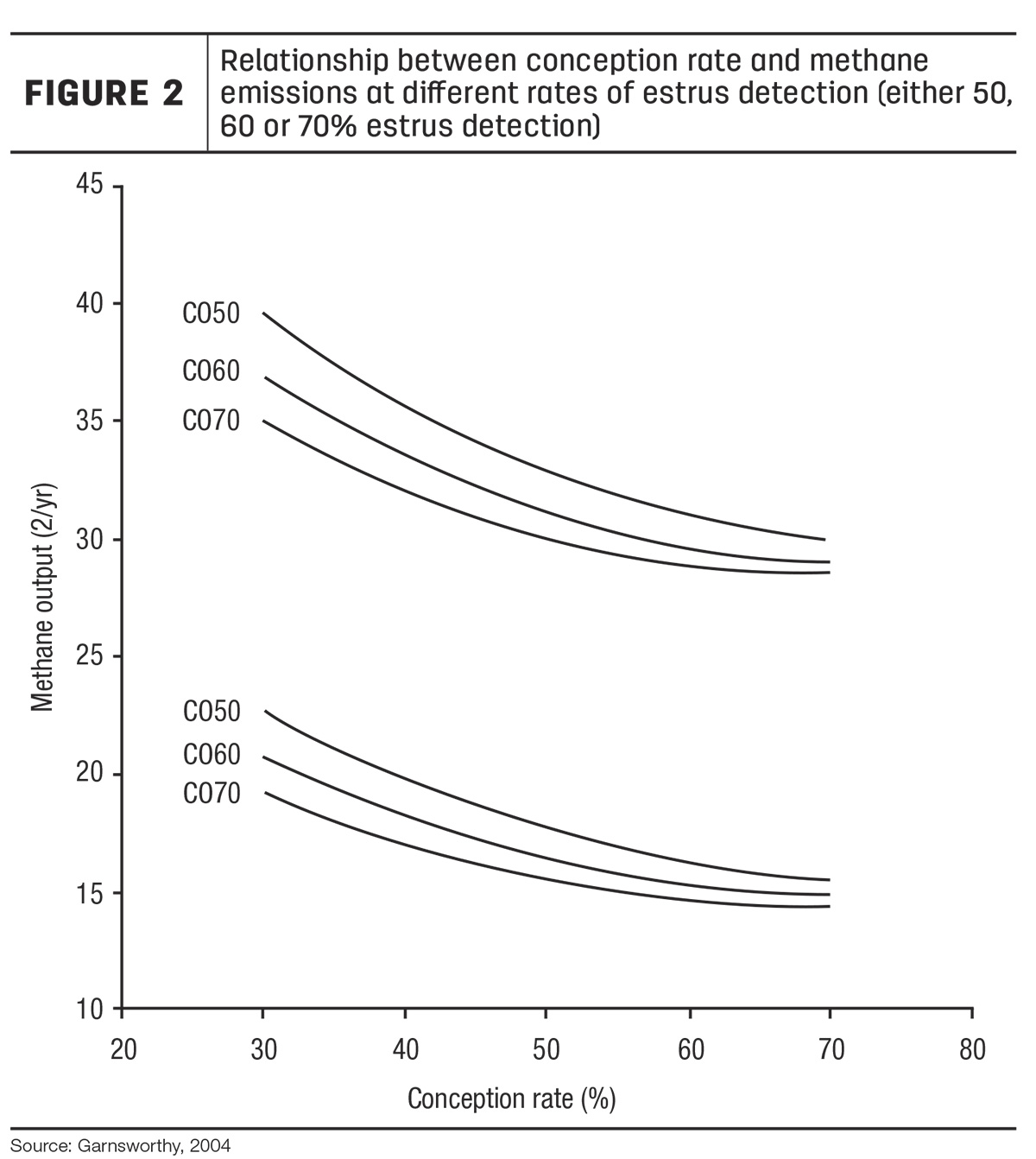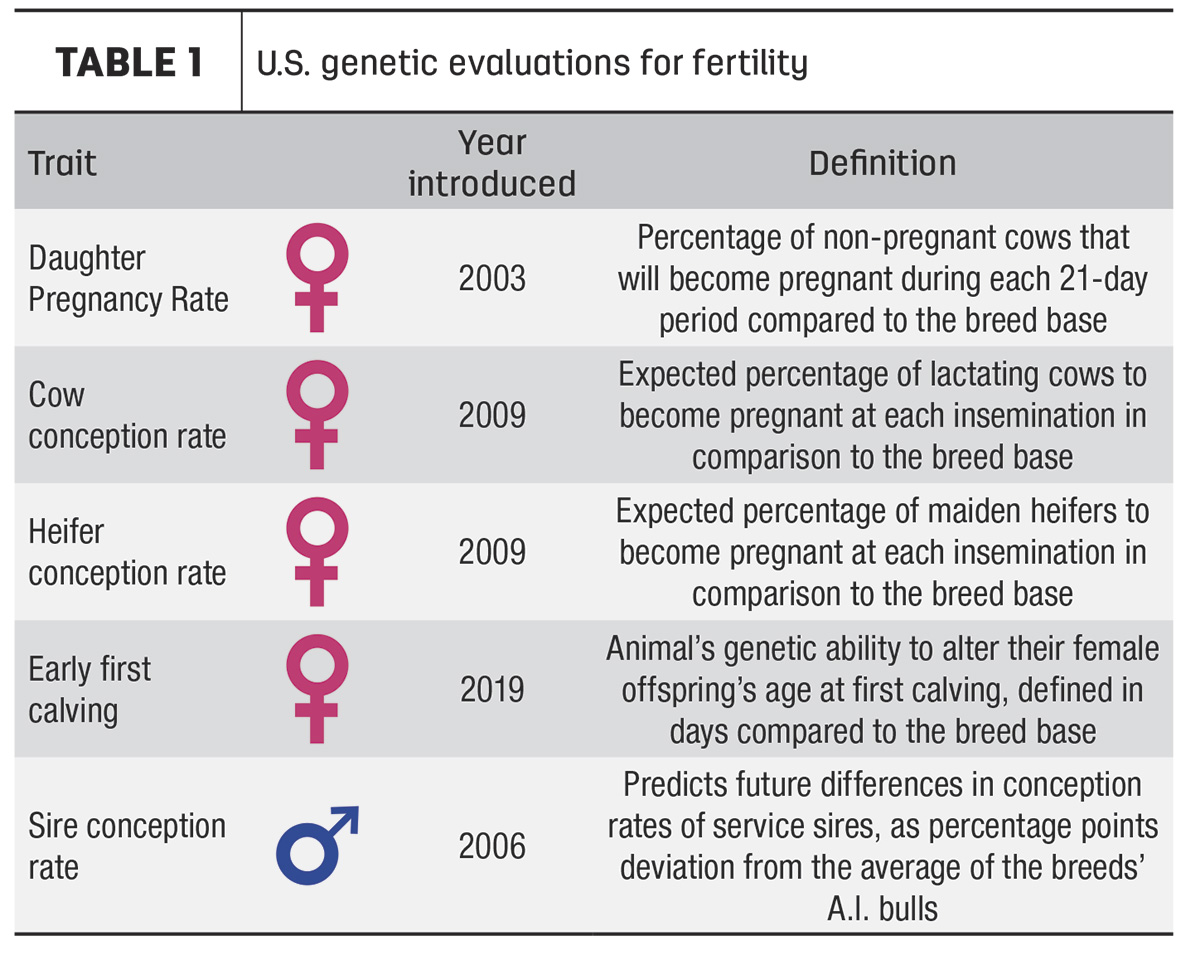A myth in U.S. Holstein breeding is the continued decrease in dairy cow fertility as milk production has increased. What is the status on this statement today?
It is true that U.S. Holsteins experienced a decline in fertility until 2000 during decades of tremendous production gains. It is also true that production and fertility are negatively correlated in farm animals. Said another way, higher-producing cows are genetically predisposed for decreased reproductive efficiency.
Acknowledging those facts, 2000 was a turning point for U.S. dairy cow fertility. Despite the negative correlation between production and fertility, current genetic trends are favorable for both. Figure 1 shows the phenotypic (or observed) trends in milk yield and pregnancy rate of U.S. Holsteins since 1960.

Until 1994, our national selection index focused on production. Fertility suffered, in line with its negative genetic correlation with milk yield. In the mid-1990s, that downward slide for pregnancy rate slowed and began to reverse in the early 2000s.
What changed?
Genetic goals expanded, and breeding programs began to incorporate longevity and then direct measures of fertility. In 1994, Productive Life became available and the U.S. genetic selection index – Net Merit – expanded to include Productive Life, along with Somatic Cell Score. We began to indirectly breed more fertile cows through the positive link between reproductive performance and longevity.
In 2003, the trait of Daughter Pregnancy Rate (DPR) was introduced and included in Net Merit. Dairy producers and breeding programs could directly select for cow fertility, which dramatically changed the situation. U.S. selection goals and index adjusted to increase production while improving fertility.
Through the CDCB’s national cooperator database with millions of phenotypic records, the traits of Sire Conception Rate, Cow Conception Rate and Heifer Conception Rate became nationally available in 2006 and 2009, respectively.
Selection indexes define breeding goals
Selection indexes are valuable tools in cattle breeding because they combine many traits into a single value that drives genetic progress, ranks animals and streamlines management decisions. Traits are weighted based on their genetic impact on farm profitability. Today, DPR is weighted at 5% of the total Net Merit formula, and Cow and Heifer Conception Rate combine for 1.7% weighting.
Since the incorporation of fertility traits into Net Merit, more health and fitness traits have been considered including cow and heifer livability, disease resistance and feed efficiency in Holsteins. The CDCB website details the incorporation of these traits into genetic indexes. This expansion in traits has resulted in a more balanced breeding approach that considers the multitude of factors that impact a cow’s contribution to profitability over her lifetime.
Genetics and management work hand in hand
While genetic tools became available to measure and select for improved fertility, improvements in dairy management have accompanied the genetic progress. Dairy producers have implemented changes in reproduction programs, rations, cow housing and other environmental factors that work hand-in-hand with the genetic tools.
With the collective genetic and management improvements, there has been a significant decrease in the number of breedings to create a pregnancy. In 2020, the average number of inseminations per conception was 2.0, down from 2.5 in 2010, among U.S. Holsteins in herds participating in Dairy Herd Improvement (DHI) programs. The average breedings per conception in U.S. Jerseys decreased from 2.2 to 1.9 in that same 10-year period (CDCB, Reproductive status of cows in DHI programs and bred using artificial insemination).
Improved fertility enhances stewardship
Producers are intuitively familiar with the benefits of better reproduction – reduced days open, earlier return to calving, less involuntary culling and savings in insemination, veterinary and other expenses. These are certainly important for the dairy operation. Additionally, rate of genetic progress increases with reduced calving intervals and improved reproductive efficiency. This genetic progress results in permanent and cumulative advancement.
Less emphasized are the benefits to sustainability of U.S. dairy production with the improvements in cow fertility. It is a fact that dairy customers and consumers expect their food and beverages to be produced responsibly, particularly around impacts on animal welfare and our environment. More fertile cows are healthier with ability for a longer productive life, and that is important to our customers.
Improving animals’ reproductive efficiency means that fewer replacements and less resources are required to maintain herd size, and emissions will be reduced. It has been documented that improving the pregnancy rate in lactating cows and heifers is powerful in reducing the greenhouse gas (GHG) footprint of U.S. dairy. Improving pregnancy rate (at 50-day voluntary wait period) from 19% to 25% results in a 10% reduction of total herd methane on the most prominent GHG on dairies, as shown in Figure 2. This equates to a $49 per cow per year gain in profitability.

In heifers, decreasing the age at first calving (AFC) by two months (when bred at the optimum weight) can reduce the heifer footprint by 30%. With an average raising cost of $2.50 per heifer per day from weaning to breeding, the decrease in AFC equates to $150 per heifer.
Sustainability has three aspects, all of which are important to dairy consumers and buyers: social, economic and environmental.

Socially, we know having animals that more easily get pregnant are healthier animals and result in reduced hormone usage and less involuntary culling. From an economic perspective, better reproduction results in savings per animal and increased profitability. Environmentally, fewer replacements are required, fewer inputs are needed, and emissions are reduced.
Dairy geneticists, producers, veterinarians and other advisers have all rallied to improve the fertility of U.S. dairy cows. Continued emphasis to enhance reproduction simply makes sense – from the perspective of animal welfare, dairy farm profitability and enhanced sustainability.





